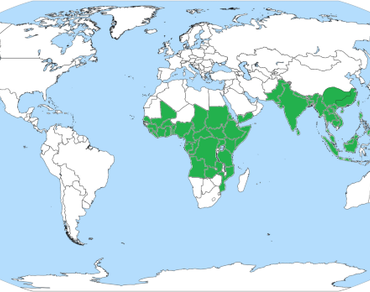Foliar characterization of salparni – a remarkable medicinal plant
Research Articles | Published: 25 October, 2023
First Page: 2481
Last Page: 2490
Views: 3561
Keywords: n Pleurolobus gangeticusn , n Desmodium gangeticumn , Anatomy, Leaf, Petiole, Homoeopathy
Abstract
Pleurolobus gangeticus (L.) J. St.-Hil. ex H. Ohashi & K. Ohashi syn. Desmodium gangeticum (L.) DC. a perennial erect herbaceous plant, belonging to the family Fabaceae, sub-family Papilionoideae. This plant has significant medicinal properties in traditional as well as complementary systems of medicine. In Ayurveda, this plant is used for antiemetic, digestive, tonic, febrifuge, anticatarrhal, and inflammatory properties. In Homeopathy, plant-based medicine is mainly used for fever, headache, meningitis, cough, diarrhoea, dysentery, biliousness, vomiting, piles, bronchitis, asthma, intestinal parasites, arthritis, rheumatism and post-delivery disorders, etc. P. gangeticus is a remarkable herbal plant due to the presence of several chemical constituents and its multitargeted mode of action. This study aims to establish the peculiar parameters of P. gangeticus through macroscopic, microscopic and powder studies of the leaf and petiole. Leaf anatomy and biostatistical parameters showed that plants have two types of stomata, i.e. paracytic and normocytic. It consists of three types of trichomes viz. non-glandular trichomes were long, unicellular, warty with a pointed end; small, uniseriate trichomes had blunt end; and glandular trichomes were capitate with small, unicellular base and multicellular head. Prismatic crystals were especially present in the vein region. Petiole also has a few peculiar parameters: the presence of ridges, furrows, two lateral projections on the ventral side, epidermal cell papillae and a few prismatic crystals of 10.5 × 11.0–15.3 × 11.5 µm size. Petiole sections showed that large bundles were lying below the ridges, and smaller ones were below the furrows. This study showed that both macroscopical and microscopical investigations of the raw material are necessary for standardization and correct identification. It is essential to establish the specification of the medicinal raw material for the proper recognition of authentic plant material for the manufacturers and further research.

References
Chase CR, Pratt R (1949) Fluorescence of powdered vegetable drugs with particular reference to development of a system of identification. J Amer Pharma Assoc 38(6):324–331
Cheruvathur MK, Abraham J, Thomas TD (2013) Plant regeneration through callus organogenesis and true-to-type conformity of plants by RAPD analysis in (Desmodium gangeticum (Linn.) DC). Appl Biochem Biotech 169(6):799–1810
Deshpande HA, Bhalsing SR (2014) A review of phytochemical profile of Desmodium gangeticum (L) DC: a valued endangered medicinal plant. Int J Pharmac Sci Hea Care 1(4):36–48
Evans WC (2009) Pharmacognosy e-book. Else Heal Scien, 16th edn. Else Limit pp 133–135
Gupta AK (2003) Quality standards of indian medicinal plants. New Delhi 1:212–218
Johansen DA (1940) Plant micro technique. McGraw Hill Book Co. Inc. New York, pp 183–203
Kawale M, Saravanam R, Ankoliya S, Patel PR, Srivastava A, Gajbhiye N, Sandip LP, Manivel P (2012) Pharmacognostic characterization of Desmodium gangeticum (l.) DC - an ayurvedic medicinal plant. Int J Pharmaco Phytochem Res. 3(4):113–120
Malik JK, Soni H, Yadav B, Yadav AP (2020) Current update on ( Desmodium gangeticum ) a review. J Pharmacol Res Develop. E-ISSN: 2582-0117, 2(2), 1–6. https://doi.org/10.5281/zenodo.3763197
Mohan PK, Adarsh Krishna TP, Senthil Kumar T, Ranjitha Kumari BD (2021) Pharmaco-chemical profiling of (Desmodium gangeticum (L.) DC.) with special reference to soil chemistry. Fut J Pharmaceut Sci 7(1):1–11
Ohashi H (2004) Taxonomy and distribution of Desmodium and related genera (Leguminosae) in Malesia (I). J Japan Bot 79(2):101–139
Ohashi K, Ohashi H, Nemoto T et al (2018) Phylogenetic analyses for a new classification of the Desmodium group of leguminosae tribe desmodieae. J Jpn Bot 93(3):165–189
Ohashi H, Polhill RM, Schubert BG (1981) Desmodieae. In: Polhill RM, Raven PH (Eds.), Advances in legume systematics. Part 1. Royal Botanic Gardens, Kew, pp 292–300
Rastogi S, Pandey MM, Rawat AKS (2011) An ethnomedicinal, phytochemical and pharmacological profile of Desmodium gangeticum (L.) DC. and Desmodium adscendens (Sw.) DC. J Ethnopharmacol 22;136(2):283–96 https://doi.org/10.1016/j.jep.2011.04.031
Singh S, Verma D (2022) Morphological and anatomical characterization of Fagopyrum esculentum Moench: a highly used medicinal plant in old and new world. 10. 1007/ s42535- 022-00376–5
Singh S, Verma D (2021) Foliar epidermal study on selected medicinal plants used in homeopathy. Pharmacogn Res 13(2):75–81
Toyigbénan BF, Raphiou M, Marcellin A, Durand DN, Aklesso N, Sylvestre A, Haziz S, Adolphe A, Aly S, Lamine BM (2018) Ethnobotanical survey of three species of Desmodium genus (Desmodium ramosissimum, Desmodium gangeticum and Desmodium adscendens) used in traditional medicine, Benin. Int J Sci 7:26–29
Trease GE, Evans W (1985) Trease and evans pharmacognosy. Harcourt Brace & co. pp 735–738
Trout K (2004) Trout’s notes on the genus desmodium chemistry, ethnomedicine, pharmacology, synonyms and miscellany. Trout and Friends. London. pp. 1–38
Vedpal P, Dhanabal SP, Dhamodaran P, Duraiswamy B, Chaitnya MVNL, Jeyaprakash MR, Jayaram Unni (2016) Pharmacognostical characterization, phytochemical screening and finger print profile of the plant Desmodium gangeticum DC. Int J Pharmaco Phytochem Res 8(8):1271–1277
Verma D, Singh S, Patel S, Singh MP (2022) Anatomical characterisation and foliar microscopy of Hypericum perforatum L. Indian J Res Homoeopath 16(1):21–30
Verma PN, Vaid I (2002) Encyclopedia of Homoeopathic Pharmacopoeia Vol I (B. Jain Publisher) pp 958
Wallis TE (1985) Textbook of Pharmacognosy, (15th ed), (T.A. Churchill, London). pp 575–582
William B (2007) Pocket manual of homoeopathic materia medica and repertory. B. Jain Publishers (P) Ltd, Delhi, p 1059
World Health Organization (1998) Quality control methods for medicinal plant materials. World Health Organization
Author Information
Pharmacognosy Laboratory, Drug Standardization, DDPR Central Research Institute for Homoeopathy, Noida, India